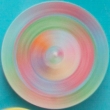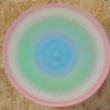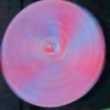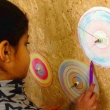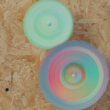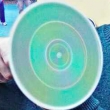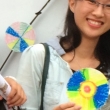The fixed parameters by which we normally describe color — hue, value and intensity (saturation)— leave us strangely illiterate with respect to another of its beguiling qualities: motion. Motion and variability are inherent in the light waves that carry color information to our eyes, but the materials that we use to transmit light– paints, dyes, light emitting diodes, etc.– have stabilized color information to a degree that we no longer associate color with motion. Absent an intent to portray motion, green on the screen or green on a t-shirt is quite different from green on a leaf. This may matter little for practical purposes, but to regain a sense of color as motion is to rediscover something enchanting in the world.
Color is movement
It is mid-Autumn in Shanghai, and the yellow and brown leaves that litter the streets seem unrelated to the green foliage overhead. On closer inspection a fallen leaf is not completely yellow, however, but has traces of color across the spectrum mixed in including green. From this small clue I can grasp that while the leaf is simplistically “yellow” it is also in the midst of a change process unfolding in real time. As the cell structure of the leaf changes in correspondence with the rotation of the earth around the sun it emits varying wavelengths of light that I see as color. And just as the motion manifest in the leaf alters the movement of lightwaves, as its life processes wane it will blacken. By then, however, it will hardly be recognizable as a leaf.
The motion quality of color is captured no more plainly than in the pure color experience of sunrise / sunset, impossible to describe without the suggestion of change. Before the dawn the black sky fills with light of the smallest visible wavelength, refracted across the atmosphere as the earth in shadow turns towards the sun. We call this color blue, but really the sky is in the process of becoming blue. The first rays of light on the horizon are likewise easily described as yellow, orange, or red but perhaps better understood as in a state of flux between these colors. As the sun rises in the sky it becomes more unmistakably white, an incomprehensible density of all color, itself an unimaginably giant mass of atomic motion.
Color is not arbitrary
The color of the leaf is evidence of relationships that the leaf participates in, with the sun, soil and water, the wind, the world of insects, other plants, and people. Color in the living world always conveys a story. Surrounded by seemingly static colors that we can conjure up at random, our attentiveness to the meaning in color is dulled. This is not a matter of failing to know why, for example, the sky is blue, but of failing to ask what it means as the sky changes from one blue to another, for lack of a sense that it matters.
Why does it matter? One answer is that everything is connected, and therefore what we don’t understand may bite us in the end. A slightly different, parallel, reply is that stories are what we live for. It is not just practical, for instance, to know that when a traffic light turns red it is time for caution, it is also intuitive and aesthetic. The fact that our blood changes color when oxygenated is vitally linked to several million years of biological and behavioral evolution. Our sensitivity to red colors, whether arousing alertness to danger, sexual excitement, valor and battle-readiness, or joy and happiness, is fundamental to the human condition. As we blush, flush, bleed, or as we go pale and wan we are communicating information that is emotionally powerful. The movement of color, like a good story, can literally and figuratively move us.
Color is in the mind
If we are not moved by the colors in the sky — or on the leaves of trees, in rivers and lakes or on the wings of butterflies— the way we are by changes in the complexion of family and friends, we can at least be attuned to our kinship with the rest of the living world that communicates through the dynamic medium of color. A first step towards this sense of kinship is the apprehension of color as dynamic, not frozen in the abstractions of hexadecimal code, color charts and paint palettes. “Sun Spinning”, a public artwork and improvisational workshop series has developed in connection with this kernel of thought.
“Sun Spinning” is based on the magical experience of seeing a crudely colored wheel spin around fast enough to generate an almost hypnotic shimmering melange of concentric circles of color. This art work has been developed to date through three workshops and two exhibitions in partnership with iEnergy, 1001 Love • Living, Shanghai Ecodesign Fair, Shanghai heARTs, Fireflies Culture, Shanghai Girl Scouts and the Mad Curator. The experience raises questions about the physics of color perception, but more fundamentally it rekindles a sense of the beauty of color in motion. These simple spinning devices are a far more powerful draw to the contemplation of color than any words can excite. To see an archive of past “Sun Spinning” workshops and exhibitions click here. If you are interested in hosting a workshop or have ideas for collaborations please get in touch!
